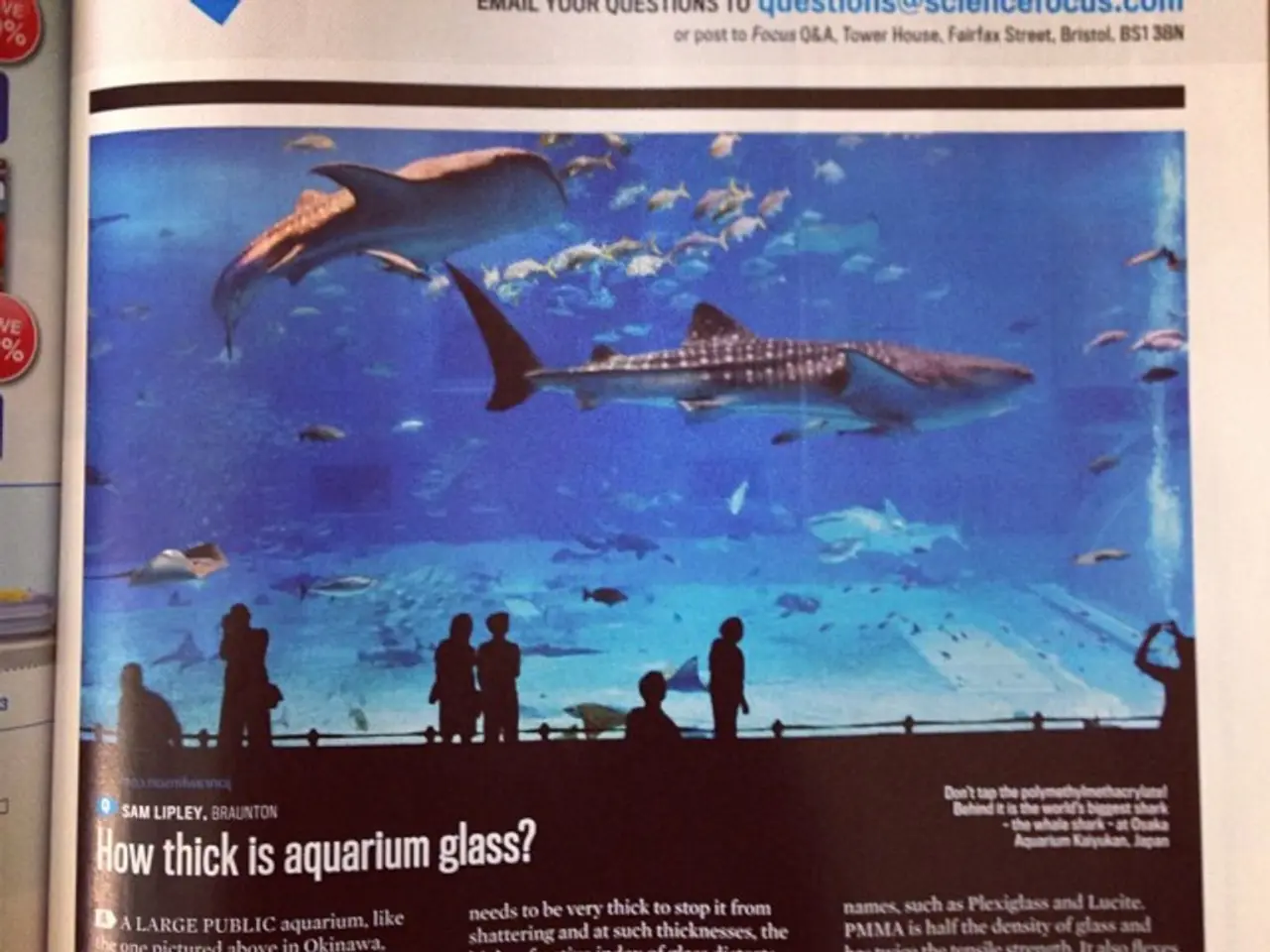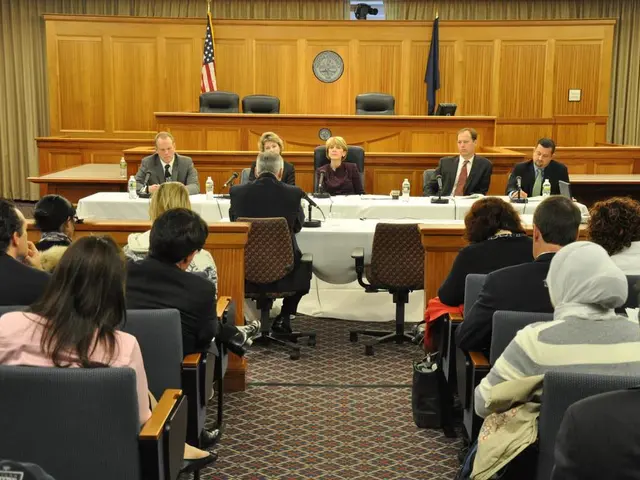"Fishing industry in Pakistan experiences repercussions due to Iran-Israel conflict"
In the coastal region of Balochistan, Pakistan, a quiet crisis is unfolding. The Iran-Israel conflict, though geographically distant, has indirectly affected the lives of thousands who depend on fishing for their livelihood.
The province's approximately 770km coastline along the Arabian Sea supports a substantial fishing industry. Around 16,000 registered boats and thousands more unregistered catch approximately 340,000 tonnes of fish annually, contributing nearly PKR 19.9 billion (US$70.1 million) to the market. Key species include tuna, Spanish mackerel, croaker, and various sardines and mackerels.
However, the war has led Pakistan to close its border with Iran, disrupting both the inflow of fuel and the export of fish. This decision has left fishing boats stranded ashore, causing income loss and food insecurity among fishing households.
One such family is that of Lateefa Nasir, a resident of Ormara. The crisis has made it difficult for her family to afford basic needs, including food and education for their children, forcing them to rely increasingly on loans.
The closure of the border has caused a ripple effect, affecting not just the fishermen but also ice factories, fish transporters, fish-processing owners, boat mechanics, and small vendors. Jumait Jangir Baloch, a fisher and a certified fish trader in Gwadar, is among those struggling.
The lack of access to the Iranian market, particularly for tuna, has put the entire fishery in Balochistan on the brink of collapse. Women who work in fish processing, grading, drying, and selling are losing their wages, further deepening the crisis.
Small vendors, who rely on cheap fish to sell, are also affected. Without the supply of affordable fish species like sardines and Indian mackerel, they find it challenging to maintain their livelihoods.
The crisis could trigger a serious food security and nutrition crisis in low-income communities in Balochistan. Rasheed, from the Balochistan Rural Support Programme, suggests that modern infrastructure could transform Balochistan's fishing industry into a lucrative export sector, reducing dependency on bartering and boosting the economy.
In response to the crisis, provincial official Kakkar has submitted a proposal for a PKR 380 million (US$1.34 million) endowment fund to support emergency fuel subsidies, welfare schemes, and compensation for affected fishermen.
However, the situation remains complex. The sector remains poorly regulated, underfunded, and deeply exposed to external shocks. The area's proximity to Iran makes it sensitive to geopolitical shifts, which can further destabilize local conditions and complicate food and economic security.
As the conflict continues, the fishing communities of Balochistan face an uncertain future. Their resilience, however, remains unwavering, as they navigate the challenges posed by the Iran-Israel conflict, climate change, and overfishing.
- The SDGs aim to address global issues, including climate change, and improve the lives of people worldwide.
- Manufacturing industries contribute heavily to climate change with their emissions and energy consumption.
- The finance industry has a crucial role to play in funding sustainable solutions for climate change.
- Renewable energy sources, such as solar and wind, are key in the fight against climate change and the reduction of greenhouse gas emissions.
- The aerospace industry is investing in climate change mitigation through the development of carbon-neutral aviation technologies.
- Retail businesses can reduce their carbon footprint by adopting sustainable practices like using recyclable packaging and promoting energy-efficient products.
- Interior-design trends are increasingly focused on incorporating eco-friendly materials and energy-efficient solutions.
- In the kitchen, choosing energy-efficient cooking methods and appliances can contribute to reducing one's impact on climate change.
- Transportation is one of the major contributors to climate change, and changing to electric vehicles can help mitigate this issue.
- Wearables devices include smartwatches and fitness trackers that can help users maintain a healthier lifestyle, contributing to overall climate change mitigation efforts.
- Smart home devices, such as smart thermostats and energy-efficient appliances, are designed to save energy and reduce carbon emissions.
- Cybersecurity breaches, common in the digital age, can have significant impacts on finance, business, and personal-finance management.
- Adopting a lifestyle that prioritizes sustainability, such as reducing waste, conserving water, and embracing minimalism, can help combat climate change.
- Outdoor living spaces, when designed with sustainability in mind, can provide tranquility and eco-friendliness.
- Fashion and beauty industries are under scrutiny for their environmental impact, and sustainable alternatives are gaining popularity.
- Food and drink industries, particularly factory farming, contribute to climate change through methane emissions.
- The dining industry can reduce its environmental impact by sourcing local, organic ingredients and using energy-efficient appliances.
- Family dynamics can shift due to economic instability caused by climate change, with some households struggling to afford basic necessities.
- Automotive companies are developing electric and hybrid vehicles to reduce their carbon footprint and contribute to the fight against climate change.
- Investing in businesses that focus on climate change solutions can be a way to support the green economy and help combat climate change.
- Wealth-management strategies can incorporate strategies aimed at mitigating climate risk and maximizing investment in sustainable industries.
- Home and garden improvements, such as planting native trees and incorporating rainwater collection systems, can help combat climate change by promoting sustainable living.
- Home-improvement projects, like retrofitting homes with energy-efficient appliances and insulation, can help reduce carbon emissions.
- Baking and cooking at home can lead to healthier diets and reduced reliance on processed foods that contribute to climate change.
- Beverages, particularly those made with sustainable practices and ingredients, can help combat climate change by reducing waste and supporting local economies.
- Love and dating are increasingly influenced by lifestyle choices, with many people prioritizing compatibility in sustainability and climate-conscious interests.
- Politics play a significant role in addressing climate change and implementing policies that combat this global issue.
- News coverage on climate change, including general news, crime and justice, and finance and business, is essential to raising awareness and driving action.




